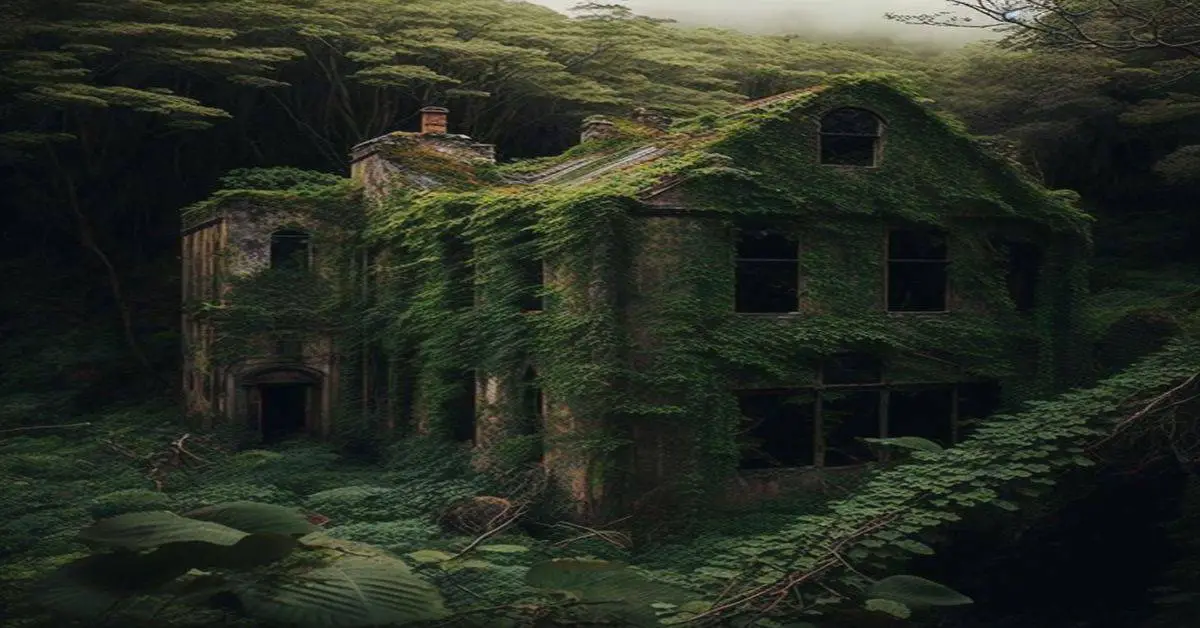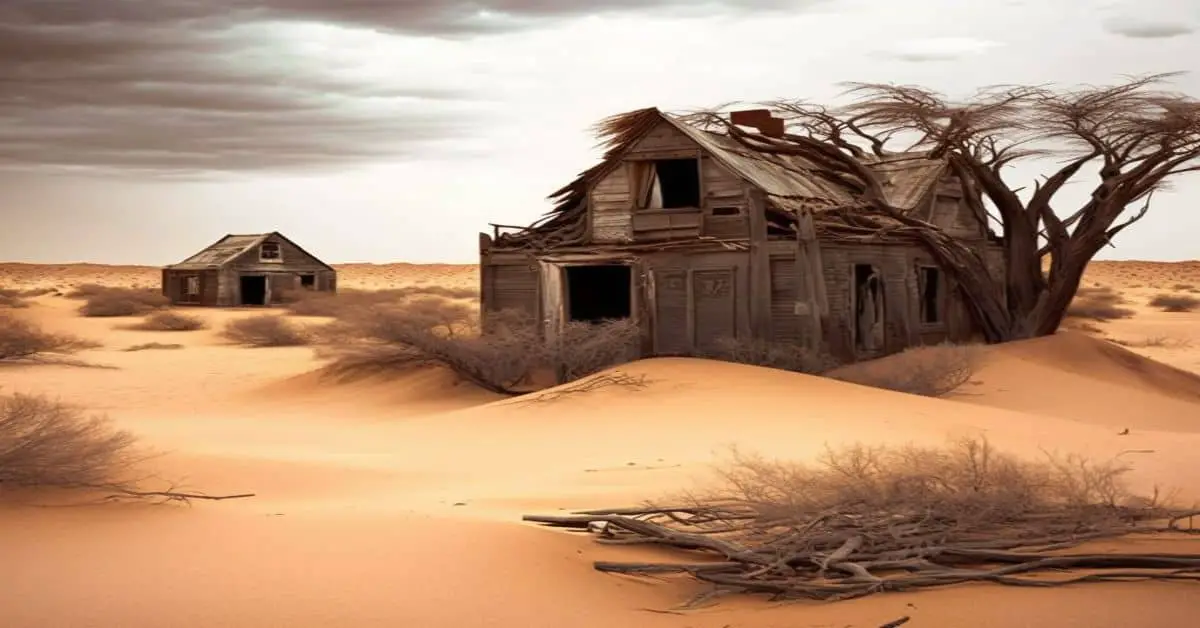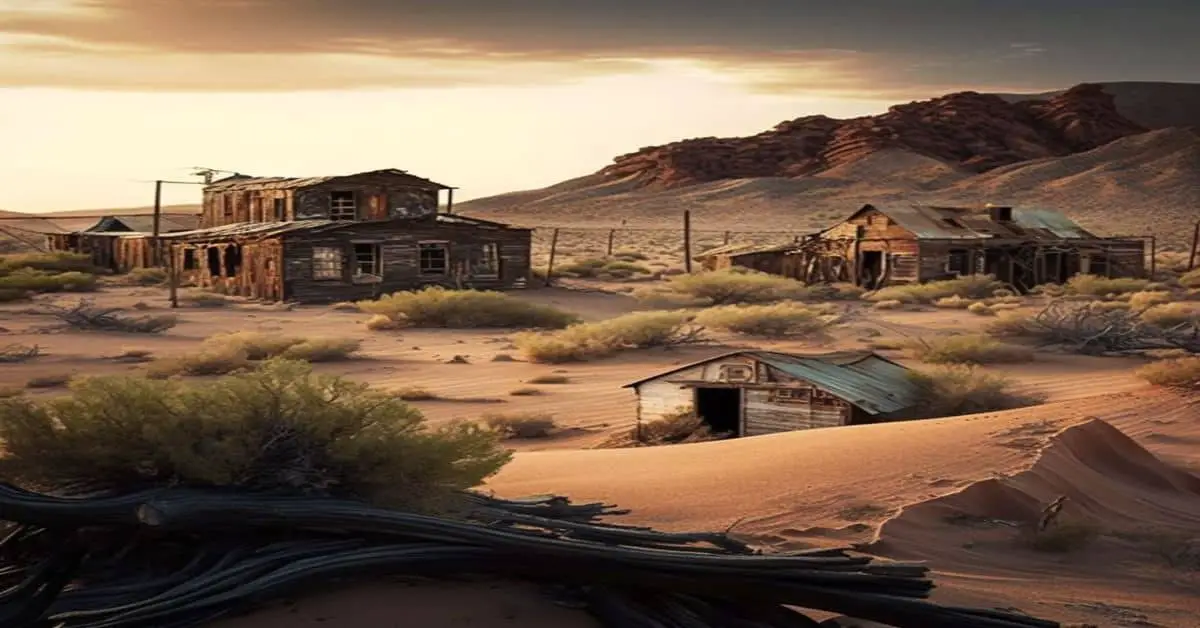Nestled in the Black Hills of South Dakota lies a unique and eerie adventure waiting to be discovered. Cascade Springs, a ghost town once a bustling resort town, now stands as a testament to a bygone era.
Founded in 1888 as a destination for those seeking the healing properties of the warm mineral spring that gushed out 2,000 gallons of warm water a minute, Cascade Springs boasted a four-story, hundred-room hotel and 36 city blocks. However, the town’s decline was swift, and by 1900, only a post office and 25 residents remained.
Today, visitors can explore what remains of the town, including a few buildings and the mayor’s Victorian home. Stones from the hotel were even used to build a Catholic Church in Hot Springs.
Whether you’re a history buff or an adventure seeker, Cascade Springs is a must-visit destination that offers a fascinating glimpse into the past and a chance to experience the eerie charm of a South Dakota ghost town.
Key Takeaways
- Cascade Springs, South Dakota, was founded in 1888 as a resort town with a warm mineral spring as the main attraction. Still, by 1900, only a post office and 25 people remained due to economic factors, natural disasters, and the cost of maintaining its infrastructure.
- The town had a four-story, hundred-room hotel and 36 city blocks and was once a bustling resort town that attracted people from all over the country.
- Cascade Springs is now a popular tourist attraction, drawing visitors to its tranquil surroundings and historical significance. Visitors can explore the remaining structures and appreciate their architectural and historical value.
- The town’s rich history has been preserved through various preservation techniques, and the surviving buildings and stone blocks from the hotel evoke a sense of nostalgia for a bygone era.
History and Founding
Cascade Springs, South Dakota, was founded in 1888 as a resort town, with the main attraction being a warm mineral spring that gushed out 2,000 gallons of warm water a minute. This led to the construction of a grand four-story, hundred-room hotel and the layout of 36 city blocks for development. The town boasted resort amenities such as a theater, dance hall, and several retail stores.
However, the town’s decline was gradual, and by 1900, only a post office and 25 people remained. Despite its decline, Cascade Springs was once a bustling resort town that attracted people from all over the country. The mineral springs were said to have healing properties, and the town boasted several hotels and cabins for visitors to stay in.
The four-story hotel was the most impressive building in the town, with its grand facade and luxurious amenities. Unfortunately, the decline of the town was inevitable, and by the turn of the century, most of the buildings were abandoned, and the once-thriving resort town was reduced to a post office and a handful of residents.
“The clean, clear water of the falls originates about two miles upstream at Cascade Springs, where a series of six artesian springs feed ever-warm, 67-degree water into Cascade Creek. The water’s temperature creates thick vegetation around the springs, creek and falls. Rare plants are found there, including a fern, prairie gentian and orchid that are nonexistent in the rest of South Dakota.”
https://www.southdakotamagazine.com/cascade-falls
Decline and Abandonment
The once prosperous resort community in Fall River County saw a gradual decline in the late 19th century, resulting in most of its buildings and infrastructure being abandoned by the turn of the century.
Economic factors played a significant role in the decline of Cascade Springs.
The town’s popularity as a resort destination waned, and visitors began seeking other locations.
The cost of maintaining the town’s infrastructure, including the hotel and the mineral spring, became too high to sustain.
Natural disasters also contributed to the town’s decline.
A major flood in the early 1890s caused significant damage to Cascade Springs, washing away much of the town’s infrastructure.
This event and the town’s economic struggles left many residents with no choice but to leave.
By 1900, only a post office and 25 people remained, and the town was officially abandoned.
Today, only a few buildings and the stone blocks from the hotel remain, serving as reminders of the once-thriving community.
Remains and Preservation
Despite the gradual decline and abandonment of the town, the surviving buildings and stone blocks from the hotel serve as a poignant testament to the former glory of this once-thriving resort community, preserving its history and evoking a sense of nostalgia for a bygone era.
The remaining structures, such as the sandstone bank, the banker’s wooden home, and the mayor’s Victorian home, are now private residences, while the other buildings have been completely demolished.
Nevertheless, the town’s rich history has been preserved through various preservation techniques, such as the storage and reuse of the blocks in constructing a motel in Hot Springs as a decoration.
Today, Cascade Springs, South Dakota, is a popular tourist attraction, drawing visitors to its tranquil surroundings and historical significance.
Visitors can explore the remaining structures and appreciate their architectural and historical value, with some buildings offering guided tours.
The town’s unique charm and preserved history make it an ideal destination for history enthusiasts, architecture buffs, and anyone seeking a glimpse into the past.
As such, Cascade Springs serves as a reminder of the town’s former glory and a testament to the resilience of its inhabitants, who have managed to preserve its legacy despite its gradual decline and abandonment.
Frequently Asked Questions
Are there any legends or folklore associated with the ghost town of Cascade Springs?
No known legends or folklore are associated with the abandoned structures of Cascade Springs. However, the town’s historical significance as a former resort town with a warm mineral spring and a four-story hotel that declined rapidly after 1900, remains.
Has any paranormal activity been reported in the remaining buildings of Cascade Springs?
Possible paranormal activity has been reported in the remaining buildings of Cascade Springs. Local sightings include apparitions, unexplained noises, and a feeling of being watched. However, no scientific investigation has confirmed these claims.
During its heyday as a resort town, Cascade Springs had a lively cultural and social scene with musical performances, dancing, and theater productions. Notable residents included wealthy businessmen, politicians, and socialites who frequented the luxurious hotel and mineral springs.
Is there any evidence of Native American history or presence surrounding Cascade Springs?
There is evidence of Native American history surrounding Cascade Springs, as there have been discoveries of Native American artifacts and possible archaeological sites. However, the extent and significance of these findings are not fully known.
Are there any plans for future restoration or development of the remaining buildings in Cascade Springs?
Plans for the restoration of remaining buildings in Cascade Springs are limited due to lack of funding and interest. Local community involvement is minimal. The historical significance of the ghost town is recognized, but preservation efforts are minimal.


